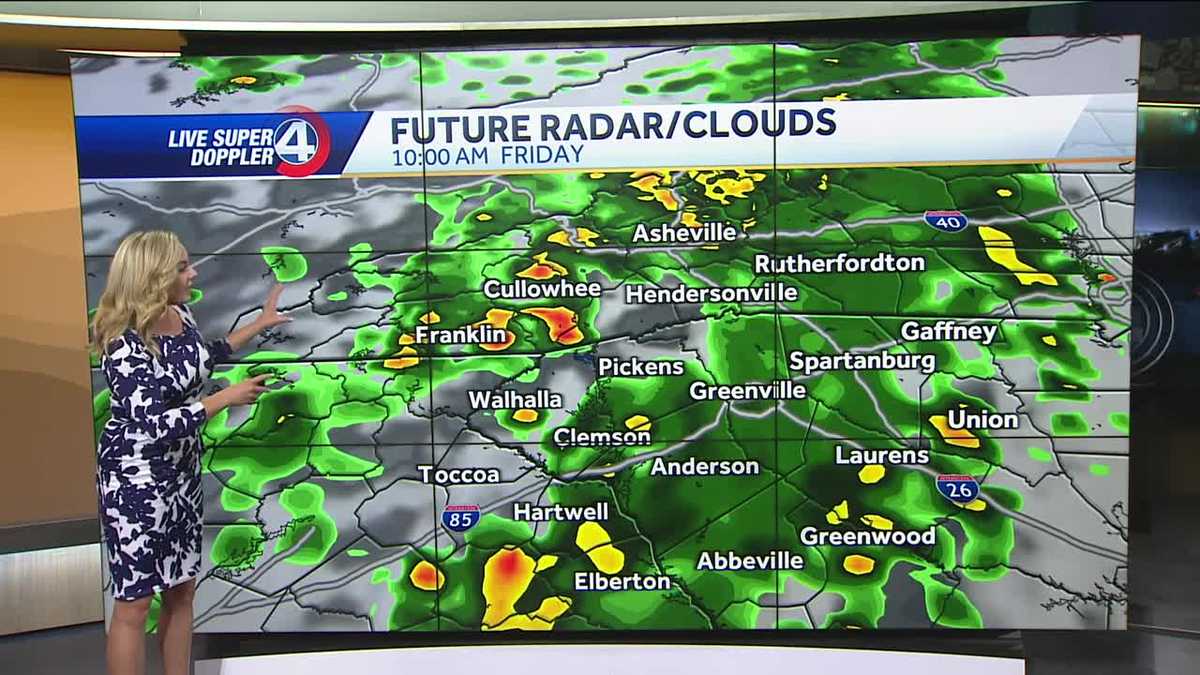Precise Rain Timing: When To Expect Showers

Table of Contents
Understanding Weather Forecasting Methods for Precise Rain Timing
Several methods contribute to modern weather forecasting and help us improve precise rain timing. These methods are not mutually exclusive; they often work together to give the most complete picture. The key techniques include radar technology, satellite imagery, and numerical weather prediction models.
Radar Technology and its Role in Precise Rain Timing
Weather radar uses radio waves to detect precipitation. It sends out pulses of radio waves, and these waves bounce back when they hit raindrops, snowflakes, or hail. The strength and timing of the returning signals allow meteorologists to determine the intensity and location of precipitation. Doppler radar, a more advanced type, can even measure the speed and direction of the precipitation, providing valuable insights into storm movement.
- Advantages of Radar: High spatial resolution for localized rain detection, real-time data updates.
- Limitations of Radar: Limited range, ground clutter can interfere with readings, unable to "see" through heavy precipitation.
Utilizing Satellite Imagery for Improved Rain Prediction
Satellite imagery provides a broader perspective on weather systems than radar. Meteorological satellites orbit the Earth and capture images of cloud cover, allowing forecasters to track the movement of storms and predict their arrival time. Cloud patterns, their thickness, and the speed at which they move are crucial indicators of impending rainfall.
- Advantages of Satellite Imagery: Wide-area coverage, monitoring of large-scale weather systems.
- Limitations of Satellite Imagery: Lower resolution than radar, cannot penetrate dense cloud cover, indirect measurement of precipitation.
Numerical Weather Prediction Models: The Science Behind Accurate Forecasts
Numerical weather prediction (NWP) models are complex computer simulations that use mathematical equations to model the atmosphere's behavior. These models ingest vast amounts of data – including observations from radar, satellites, and weather stations – to predict future weather conditions. The accuracy of NWP models depends heavily on the quality of the input data and the sophistication of the model itself. Supercomputers are essential to running these computationally intensive models.
- Advantages of NWP Models: Potential for long-range forecasting, ability to simulate complex weather phenomena.
- Limitations of NWP Models: Model accuracy depends on data quality and model resolution; errors can accumulate over time.
Utilizing Reliable Weather Resources for Precise Rain Timing
Accurate rain prediction relies not just on understanding the technology but also on accessing and interpreting data from reliable sources.
Top Weather Apps and Websites for Accurate Forecasts
Several weather apps and websites offer highly accurate forecasts. When choosing a resource, look for features like detailed hourly forecasts, precipitation maps, and severe weather alerts.
| App/Website | Features | Accuracy (general) |
|---|---|---|
| AccuWeather | Detailed forecasts, interactive maps | High |
| The Weather Channel | Wide range of data, severe weather alerts | High |
| Weather Underground | Hyperlocal data, community weather observations | High |
| National Weather Service (Specific country sites) | Official government forecasts, warnings | Very High |
Remember to always use apps and websites that are specific to your location for the most precise accurate weather forecast.
Interpreting Weather Symbols and Forecasts for Precise Rain Timing
Understanding weather symbols and forecast terminology is crucial for interpreting precise rain timing. Common symbols include various cloud icons indicating rain intensity (light rain, heavy rain, thunderstorms) and probability percentages. Phrases like "chance of showers" indicate a lower likelihood of rain than "heavy rain likely."
Local News and Meteorological Services: Your Source for Hyperlocal Rain Forecasts
Local news channels often feature detailed weather reports tailored to your specific region, offering invaluable hyperlocal insights. Additionally, national meteorological services provide official forecasts, warnings, and alerts, ensuring you're well-informed about potential severe weather events that could impact precise rain timing.
Tips and Tricks for Refining Your Rain Prediction
Beyond using established resources, you can improve your precise rain timing predictions by paying attention to local conditions and historical data.
Observing Local Weather Patterns for Improved Accuracy
Understanding your area's unique microclimates, such as hills that create wind funnels or lakes that modify temperatures, can significantly improve your forecasts. Learn to observe local indicators like changing wind direction, cloud formations, and the feel of the air (humidity) to anticipate shifts in weather patterns.
Using Historical Weather Data to Anticipate Showers
Analyzing past weather patterns for your specific location can reveal recurring trends and seasonal variations. Websites and applications frequently offer historical weather data, which you can utilize to build a better understanding of when to expect showers in your region throughout the year. Remember, however, that historical data shouldn't be the only factor in your rain prediction; it should complement current forecasts.
Conclusion: Mastering Precise Rain Timing for Better Planning
Mastering precise rain timing involves using a combination of technological tools and observational skills. By understanding how radar, satellite imagery, and NWP models work; utilizing reliable weather apps and websites; interpreting weather symbols and forecasts accurately; and by paying attention to local weather patterns and historical data, you can significantly improve your ability to predict when to expect showers. Start improving your ability to predict precise rain timing today by exploring the resources mentioned above and tailoring your approach to your specific location. Don't let unexpected showers catch you off guard!

Featured Posts
-
 Rashfords Double Aston Villa Cruise Past Preston In Fa Cup
May 20, 2025
Rashfords Double Aston Villa Cruise Past Preston In Fa Cup
May 20, 2025 -
 Preston Vs Aston Villa Rashfords Goals Secure Fa Cup Progression
May 20, 2025
Preston Vs Aston Villa Rashfords Goals Secure Fa Cup Progression
May 20, 2025 -
 Formula 1 Star Charles Leclercs New Chivas Regal Collaboration
May 20, 2025
Formula 1 Star Charles Leclercs New Chivas Regal Collaboration
May 20, 2025 -
 Dusan Tadic In Dalya Transferi Detaylar Ve Analiz
May 20, 2025
Dusan Tadic In Dalya Transferi Detaylar Ve Analiz
May 20, 2025 -
 Amazon Hercule Poirot Ps 5 Sotto I 10 Euro Affrettati
May 20, 2025
Amazon Hercule Poirot Ps 5 Sotto I 10 Euro Affrettati
May 20, 2025
